Explore the 5 Types of Inheritance in C++ with Syntax & Example
We all are familiar with the literal meaning of the term Inheritance i.e. deriving properties from ancestors. In programming terminology, Inheritance in C++ means inheriting the characteristics or properties of the parent class.
In this C++ tutorial, you are getting each and everything to master the concept of C++ Inheritance. Let’s start with the proper explanation with a real-life example.
1. What is Inheritance in C++?
As the name itself suggests, Inheritance is nothing but the ability of a class to inherit all the characteristics of another class.
It is one of the most significant features of object-oriented programming in C++.
Let us consider a real-life example.
A class named ‘Insect’ inherits its properties from another class ‘Arthropoda’ which itself inherits from another class ‘Animalia’.
Similarly, implementing the concept of inheritance allows you to generate a real-world model.
Before we discuss the example, you should know the concept of Constructor and Destructor in C++
C++ Inheritance Example
Suppose there are 3 sections in the 12th grade of your school: A, B, and C.
The functions that we need to perform in each class are taking the attendance, distributing newspapers to students who subscribed for it, and giving them their final grades.
This is how the above task would look like without using inheritance in C++:
After using inheritance, this task is easily simplified:
There are two terms you need to be familiar with in order to understand inheritance in C++.
- Base class – It is also known as a superclass or a parent class. It is responsible for sharing its properties with its derived class(es).
- Derived class – It is also known as a subclass or a child class. It is responsible for inheriting some of all of the properties of the base class(es).
2. Importance of Inheritance in C++
There are numerous reasons as to why the concept of inheritance was introduced in C++. Here are some of the reasons why:
- It drastically reduces code redundancy as it allows the derived class to inherit all the properties of the base class, leaving no room for duplicate data to achieve the same task.
- Inheritance in C++ offers the feature of code reusability. We can use the same fragment of code multiple times. To sum it up, inheritance helps us save our development time, maintain data in a simplified manner and gives us the provision to make our code extensible.
- It increases the code reliability by providing a definite body to the program.
- The transitive nature of inheritance makes things much easier for us.
Let us first try to understand what transitive means.
If a = b and b = c, by transitive law, a =c.
Similarly, if class B inherits all the properties of class A and class C inherits all the properties of class B, then class C has properties of both classes A and class B.
Key takeaway:
- The constructor and destructor of the parent class cannot be inherited.
- The assignment operator cannot be inherited
- Friend function and friend classes of the parent class cannot be inherited.
3. Types of Inheritance in C++
There are basically 5 types of inheritance in C++. The classification of inheritance is based on how the properties of the base class are inherited by the derived class(es).
3.1 Single Inheritance
This type of inheritance in C++ happens when the parent class has only one child class. In other words, this is only one derived class formed from a base class.
Syntax-
class Base
{
// BODY OF THE BASE CLASS
};
class Derived : acess_specifier Base
{
// BODY OF THE DERIVED CLASS
};
Let’s revise the concept of Classes and Objects in C++
Single Inheritance in C++ with Example
Let us better understand the concept by considering a C++ inheritance example:
#include <iostream>
using namespace std;
class Base
{
public:
int base_value;
void base_input()
{
cout<<"Enter the integer value of base class: ";
cin>>base_value;
}
};
class Derived : public Base
{
// private by default
int derived_value;
public:
void derived_input()
{
cout<<"Enter the integer value of derived class: ";
cin>>derived_value;
}
void sum()
{
cout << "The sum of the two integer values is: " << base_value + derived_value<<endl;
}
};
int main()
{
cout<<"Welcome to DataFlair tutorials!"<<endl<<endl;
Derived d; // Object of the derived class
d.base_input();
d.derived_input();
d.sum();
return 0;
}
Code-
Output-
3.2 Multiple Inheritance
This type of inheritance happens when the child class inherits its properties from more than one base class. In other others, the derived class inherits properties from multiple base classes.
Syntax
class A // Base class of B
{
// BODY OF THE CLASS A
};
class B // Derived class of A and Base class
{
// BODY OF THE CLASS B
};
class C : acess_specifier A, access_specifier A // Derived class of A and B
{
// BODY OF CLASS C
};
Do you know why Functions in C++ are important?
Example of Multiple Inheritance in C++
Let us better understand the concept of multiple inheritances by considering a C++ inheritance example:
#include<iostream>
using namespace std;
class A
{
public:
int A_value;
void A_input()
{
cout<<"Enter the integer value of class A: ";
cin>>A_value;
}
};
class B
{
public:
int B_value;
void B_input()
{
cout<<"Enter the integer value of class B: ";
cin>>B_value;
}
};
class C : public A, public B //C is a derived class from classes A and B
{
public:
void difference()
{
cout<<"The difference between the two values is: " << A_value - B_value<<endl;
}
};
int main()
{
cout<<"Welcome to DataFlair tutorials!"<<endl<<endl;
C c; // c is an Object of derived class C
c.A_input();
c.B_input();
c.difference();
return 0;
}
Code-
Output-
3.3 Hierarchical Inheritance
When multiple child classes inherit their properties from just a single base class.
Syntax
class A // Base class of B
{
// BODY OF THE PROGRAM
};
class B : access_specifier A // Derived class of A
{
// BODY OF THE PROGRAM
};
class C : access_specifier A // Derived class of A
{
// BODY OF THE PROGRAM
};
class D : access_specifier A // Derived class of A
{
// BODY OF THE PROGRAM
};
Wait!! It’s time to uncover the secret behind Polymorphism in C++
Example of Hierarchical Inheritance in C++
Let us better understand the concept of hierarchical inheritance by considering C++ inheritance example:
#include <iostream>
using namespace std;
class A
{
public:
int x, y;
void A_input()
{
cout<<"Enter two values of class A: ";
cin>>x>>y;
}
};
class B : public A // B is derived from A
{
public:
void product()
{
cout<<"The Product of the two values is: "<< x * y<<endl;
}
};
class C : public A //C is derived from A
{
public:
void division()
{
cout<<"The Division of the two values is: "<< x / y<<endl;
}
};
int main()
{
cout<<"Welcome to DataFlair tutorials!"<<endl<<endl;
B b; // Object b of derived class B
C c; // Object c of derived class C
b.A_input();
b.product();
c.A_input();
c.division();
return 0;
}Code-
Output-
3.4 Multilevel Inheritance
This type of inheritance is the best way to represent the transitive nature of inheritance. In multilevel inheritance, a derived class inherits all its properties from a class that itself inherits from another class.
Syntax
class A // Base class
{
// BODY OF CLASS A
};
class B : acess_specifier A // Derived class of A
{
// BODY OF CLASS B
};
class C : access_specifier B // Derived from derived class B
{
// BODY OF CLASS C
};
Learn Data Encapsulation in C++ with Example in just 3 min
Example of Multilevel Inheritance in C++
Let us better understand the concept of multilevel inheritance by considering a C++ inheritance example:
#include <iostream>
using namespace std;
class Base
{
public:
int base_value;
void Base_input()
{
cout<<"Enter the integer value of base class: ";
cin>>base_value;
}
};
class Derived1 : public Base // Derived class of base class
{
public:
int derived1_value;
void Derived1_input()
{
cout<<"Enter the integer value of first derived class: ";
cin>>derived1_value;
}
};
class Derived2 : public Derived1 // Derived class of Derived1 class
{
// private by deafult
int derived2_value;
public:
void Derived2_input()
{
cout<<"Enter the integer value of the second derived class: ";
cin>>derived2_value;
}
void sum()
{
cout << "The sum of the three intger values is: " << base_value + derived1_value + derived2_value<<endl;
}
};
int main()
{
cout<<"Welcome to DataFlair tutorials!"<<endl<<endl;
Derived2 d2; // Object d2 of second derived class
d2.Base_input();
d2.Derived1_input();
d2.Derived2_input();
d2.sum();
return 0;
}
Code-
Output-
3.5 Hybrid Inheritance
This type of inheritance essentially combines more than two forms of inheritance discussed above. For instance, when a child class inherits from multiple base classes all of its parent classes and that child class itself serves as a base class for 3 of its derived classes.
There are various combinations that can be made in hybrid inheritance. For instance:
Syntax
class A
{
// BODY OF THE CLASS A
};
class B : public A
{
// BODY OF THE CLASS A
};
class C
{
// BODY OF THE CLASS A
};
class D : public B, public C
{
// BODY OF THE CLASS A
};
Why don’t you try your hands in Data Abstraction in C++
Example of Hybrid Inheritance in C++
Let us better understand the concept of hybrid inheritance by considering a C++ inheritance example:
#include <iostream>
using namespace std;
class A
{
public:
int A_value;
};
class B : public A
{
public:
B() // Use of a constructor to initialize A_value
{
A_value = 20;
}
};
class C
{
public:
int C_value;
C() //Use of a constructor to initialize C_value
{
C_value = 40;
}
};
class D : public B, public C // D is derived from class B and class C
{
public:
void product()
{
cout<<"The product of the two integer values is: " << A_value * C_value<<endl;
}
};
int main()
{
cout<<"Welcome to DataFlair tutorials!"<<endl<<endl;
D d; // Object d of derived class D
d.product();
return 0;
}
Code-
Output-
4. Base Class and Derived Class in C++
As discussed earlier, a derived class in C++ is also called a child class or a subclass and a C++ base class is also called a parent class or a superclass.
While writing a C++ program, it is our duty to identify the class from which the derived class is being derived, that is, its base class.
Syntax
class name_of_derived_class : visibilty_mode name_of_base_class
{
// BODY OF THE CLASS
};
The name of the derived class is followed by a colon ‘:’ followed by the visibility mode which is again followed by the name of the base class.
4.1 Visibility Modes in C++
There are 3 types of visibility modes in C++, that is:
4.1.1 public
The public visibility mode allows the derived class to access the public and protected but not private members of the base class
Here is a diagrammatic representation of how it works:
4.1.2 private
The private visibility mode allows the derived class to access the public and protected members of the base class privately.
Here is a diagrammatic representation of how it works:
4.1.3 protected
The protected visibility mode allows the derived class to access the public and protected members of the base class in the protected mode.
Here is a diagrammatic representation of how it works:
It helps the user to specify how the features of the base class are derived from the derived class.
Let us try to understand each visibility mode with the help of a C++ code fragment:
class Base
{
public:
int a;
protected:
int b;
private:
int c;
};
class Derived_Public : public Base
{
/* a is public
b is protected
c is inaccessible */
};
class Derived_Protected : protected Base
{
/* a is protected
b is protected
c is inaccessible */
};
class Derived_private : private Base
{
/* a is private
b is private
c is inaccessible */
}5. Access Control in C++
We have seen that during inheritance, all the properties of the base class are transferred to its derived classes. But, we might encounter certain situations where you don’t want the derived classes to be able to access all the properties, but rather only a few properties. We can control this activity with the help of the concept of access control of the inheritance.
We will discuss how access control is done in the publicly and privately derived class.
5.1 Publicly Derived Class
It is pretty obvious that a class is said to be derived publicly when the keyword ‘public’ is preceded over its class name.
For instance,
class Teacher : public Student, public Person
{
//BODY OF THE CLASS
};
Here, the keyword public refers to the object of the derived class that has permission to access the public members of the base class as if they were the public members of their own class.
5.2 Privately Derived Class
Again, it is pretty obvious that a class is said to be derived privately when the keyword ‘private’ is preceded over its class name.
For instance,
class Teacher : private Student
{
//BODY OF THE CLASS
};
Here, the keyword private means that the public and protected members of the base class can directly be accessed with the help of member functions or friend functions of the derived class as if they were the private members of the derived class.
It is important to note that the public and protected members of the base class act as the private members of the derived class.
Here is a table that summarizes the access restrictions in inheritance:
Access Mode | Base Class Member | Derived Class Member |
| public | public | public |
| protected | protected | |
| private | INACCESSIBLE | |
| protected | public | protected |
| protected | protected | |
| private | INACCESSIBLE | |
| private | public | private |
| protected | private | |
| private | INACCESSIBLE |
6. Quiz on Inheritance in C++
7. Summary
Now you know the why Inheritance in C++ is important with some real-life examples. After developing an understanding of inheritance, we found motivation for studying this concept by discussing its significance. Thereafter, we carried on our discussion by studying the 5 major types of Inheritance with the help of diagrams and illustrative programs. Then, we discussed the visibility mode as a sub-topic of the derived class and base class.
Finally, we concluded our discussion by understanding the access control in inheritance in all the 3 modes. After completing this tutorial, it is safe is to say that we have developed a rigorous understanding of Inheritance in C++ and we are ready to deal with programs involving any of the 5 types of Inheritance.
Feel free to share your suggestions and queries in the comment section.
Next move – Different types of loops in C++ (An essential concept for every beginner)
If you are Happy with DataFlair, do not forget to make us happy with your positive feedback on Google
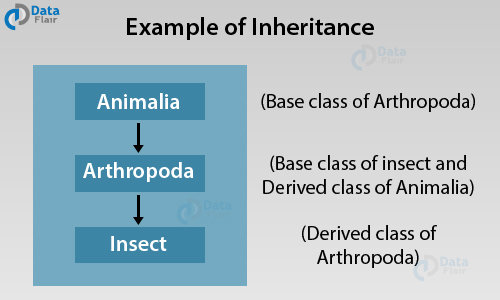
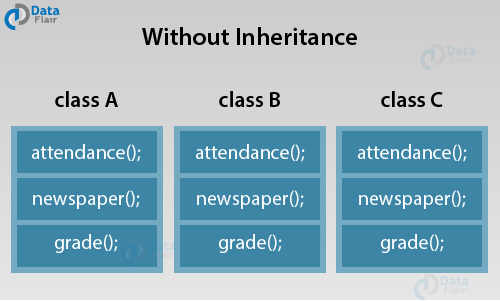
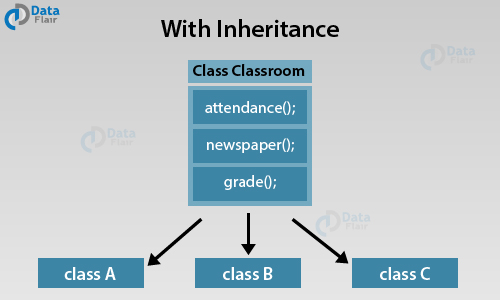
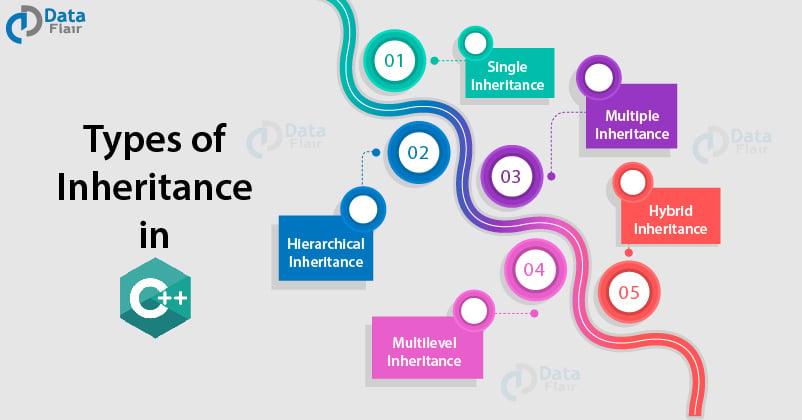
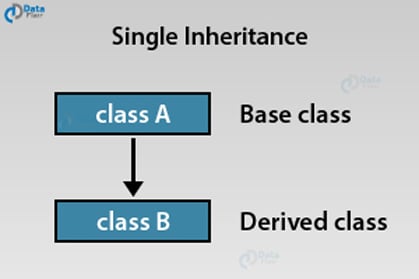
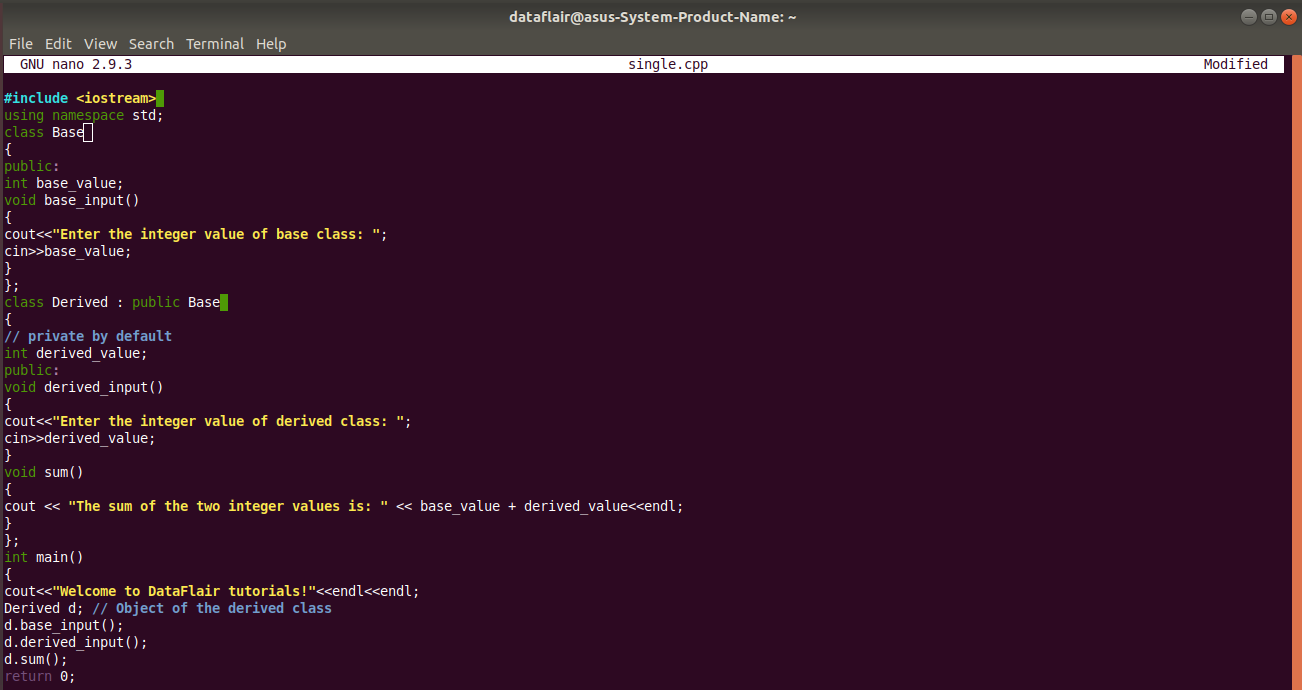


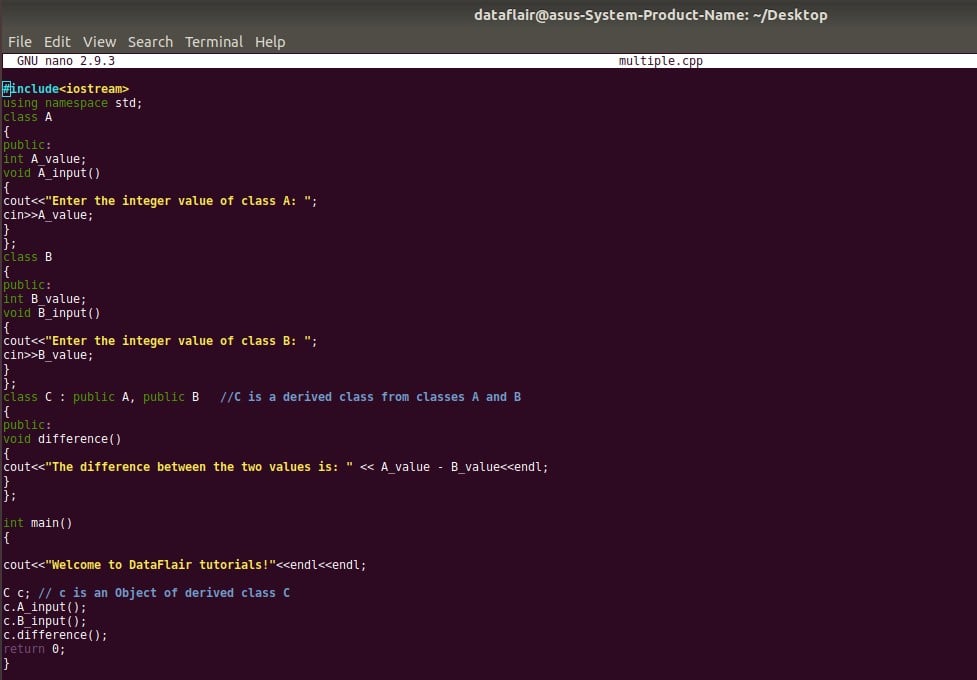
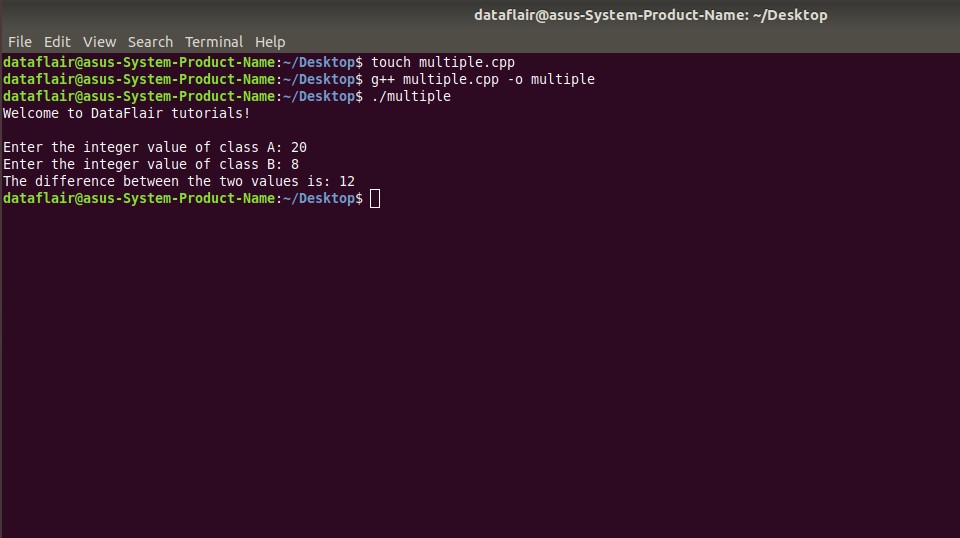
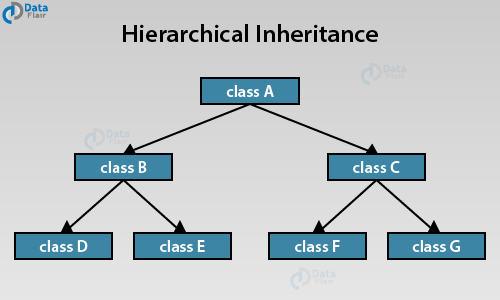
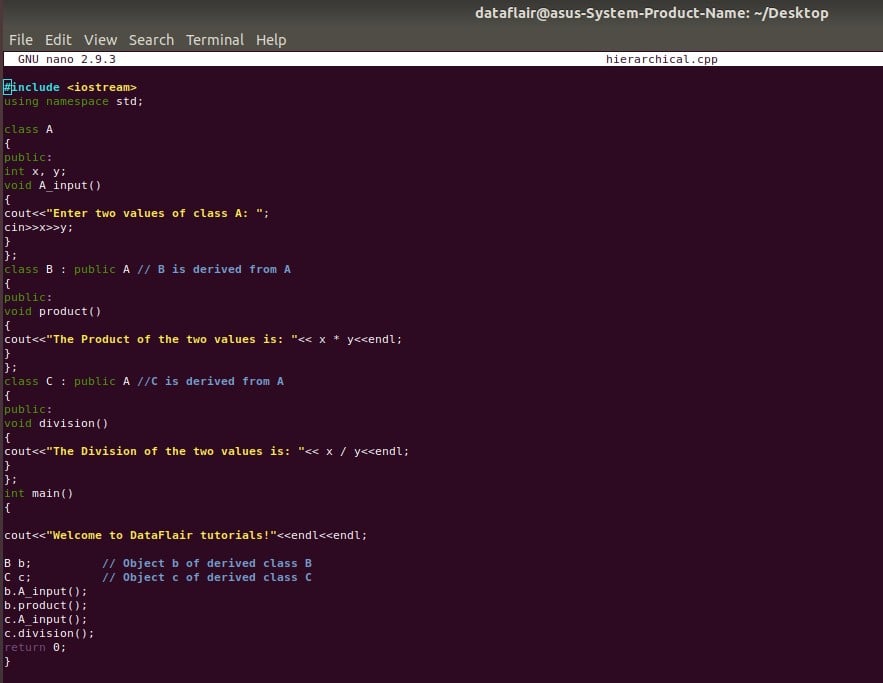

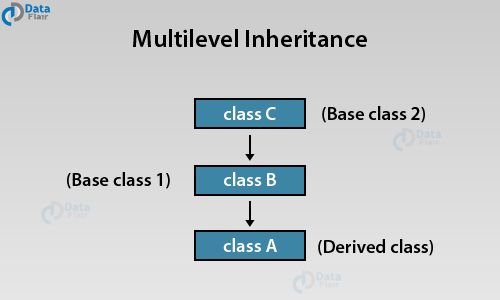
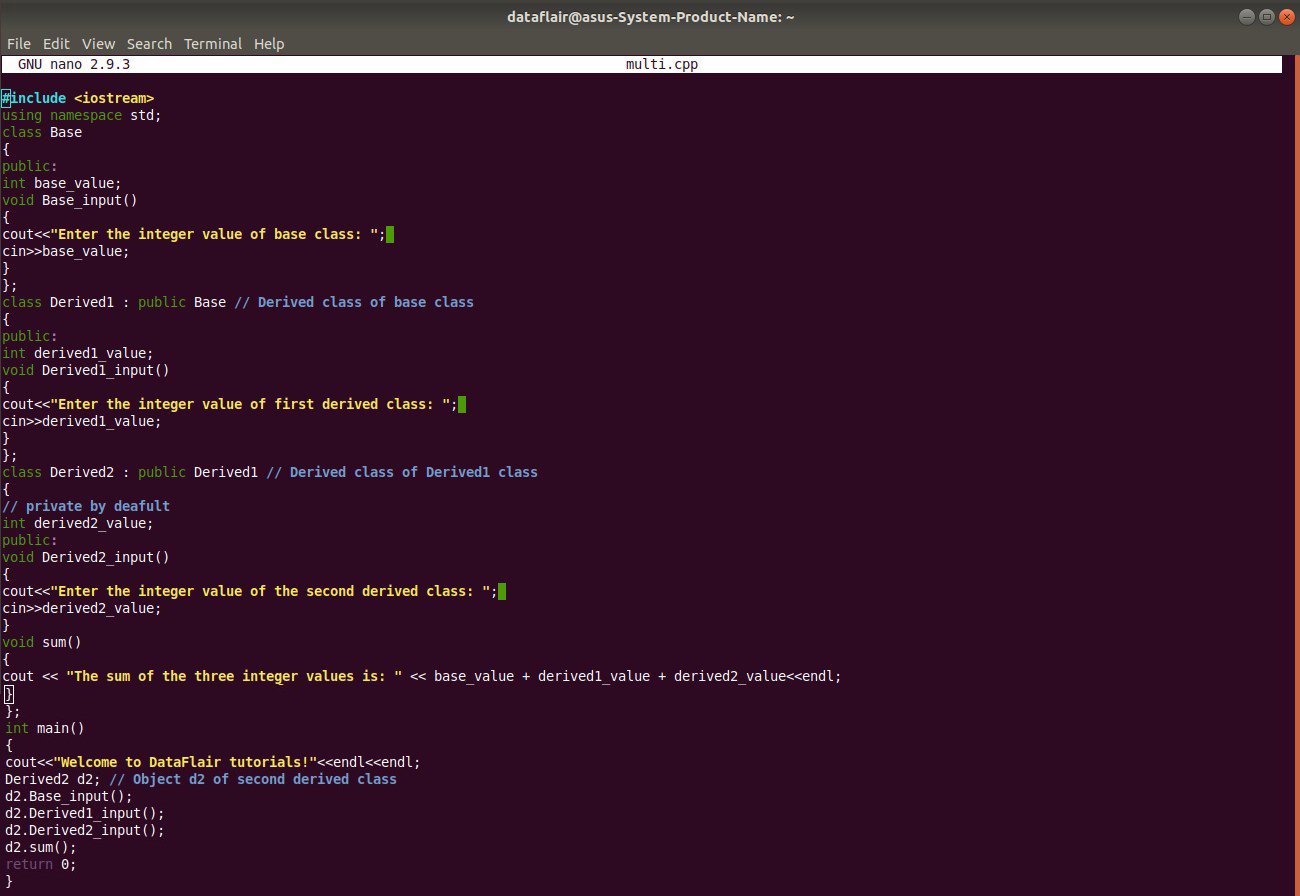
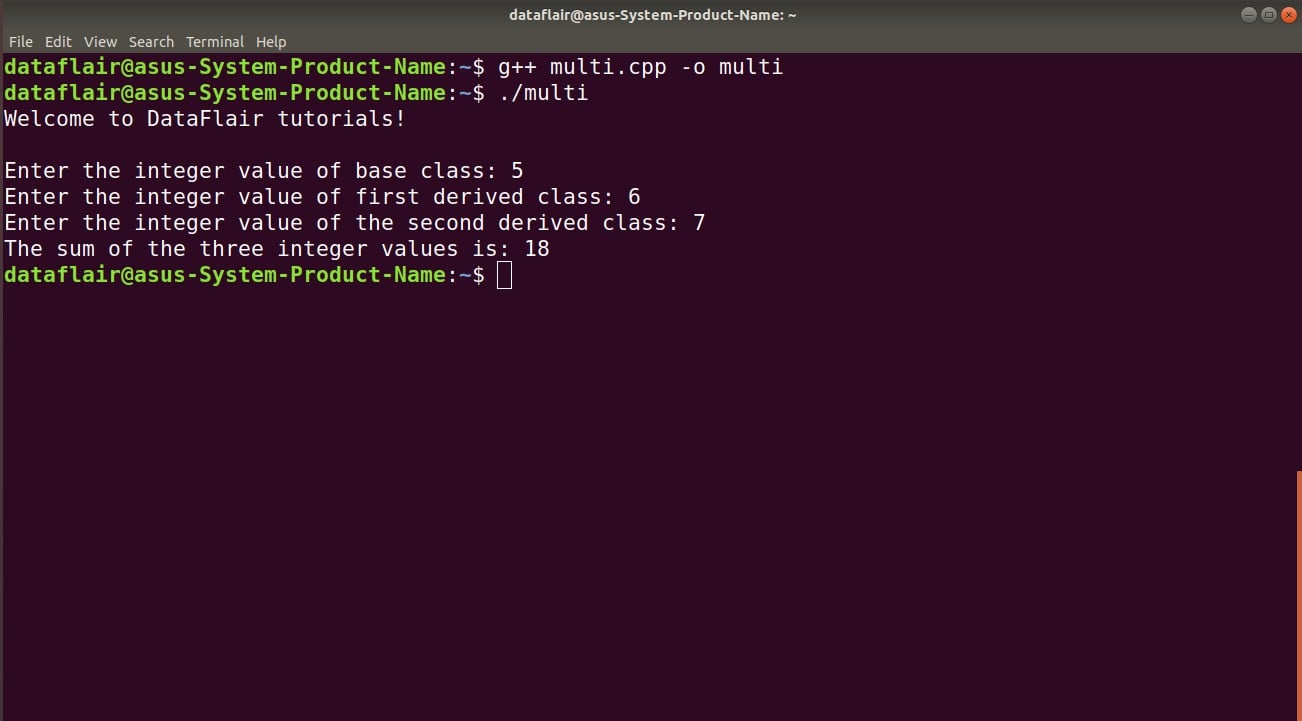
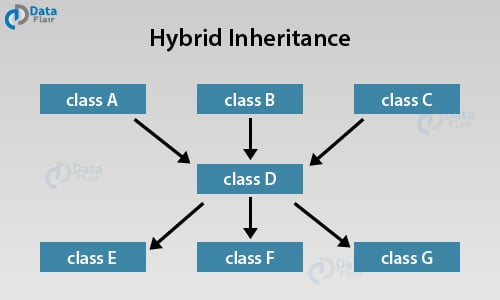
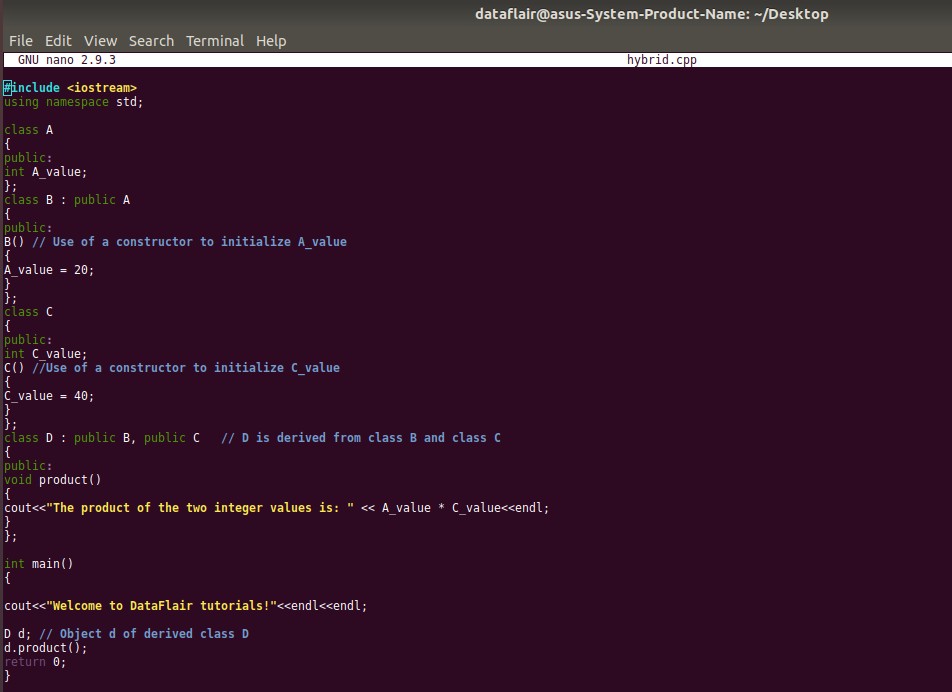
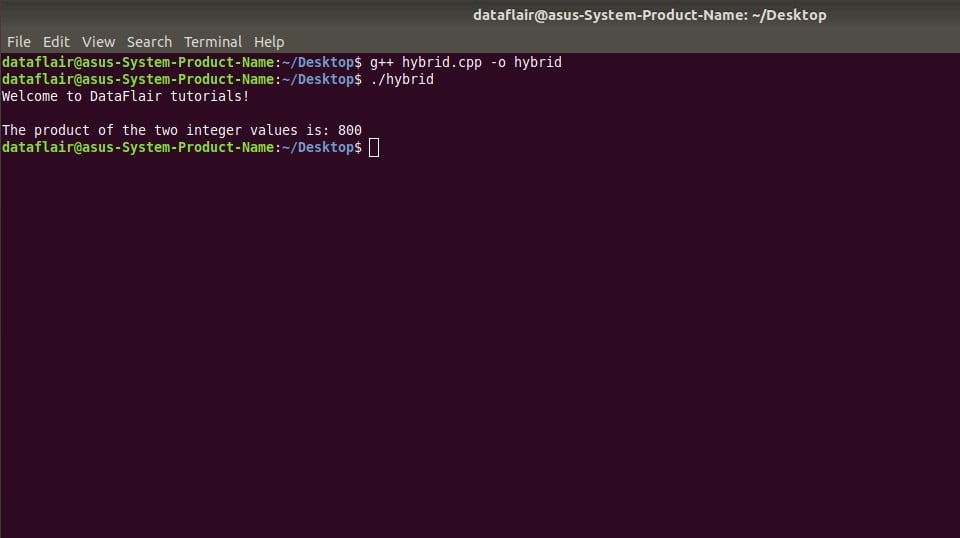
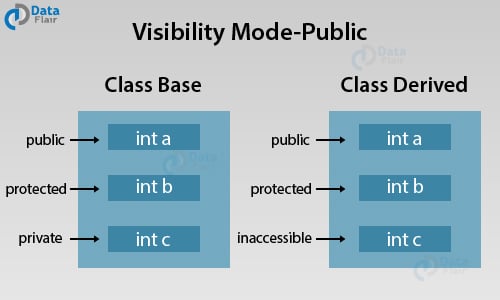
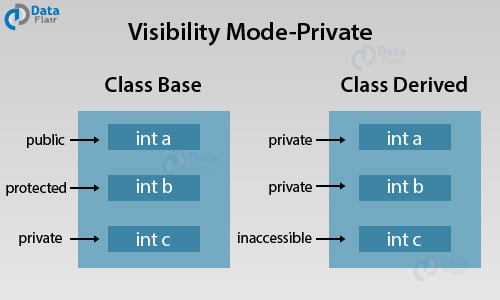
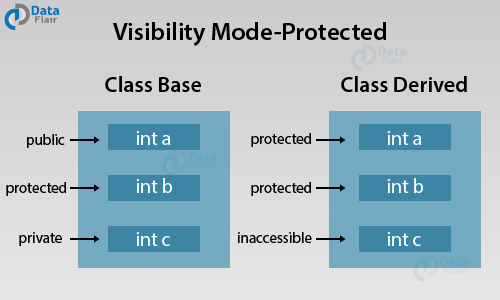


nice bro
Thanks I need passed question for this course
I need passed question for this course